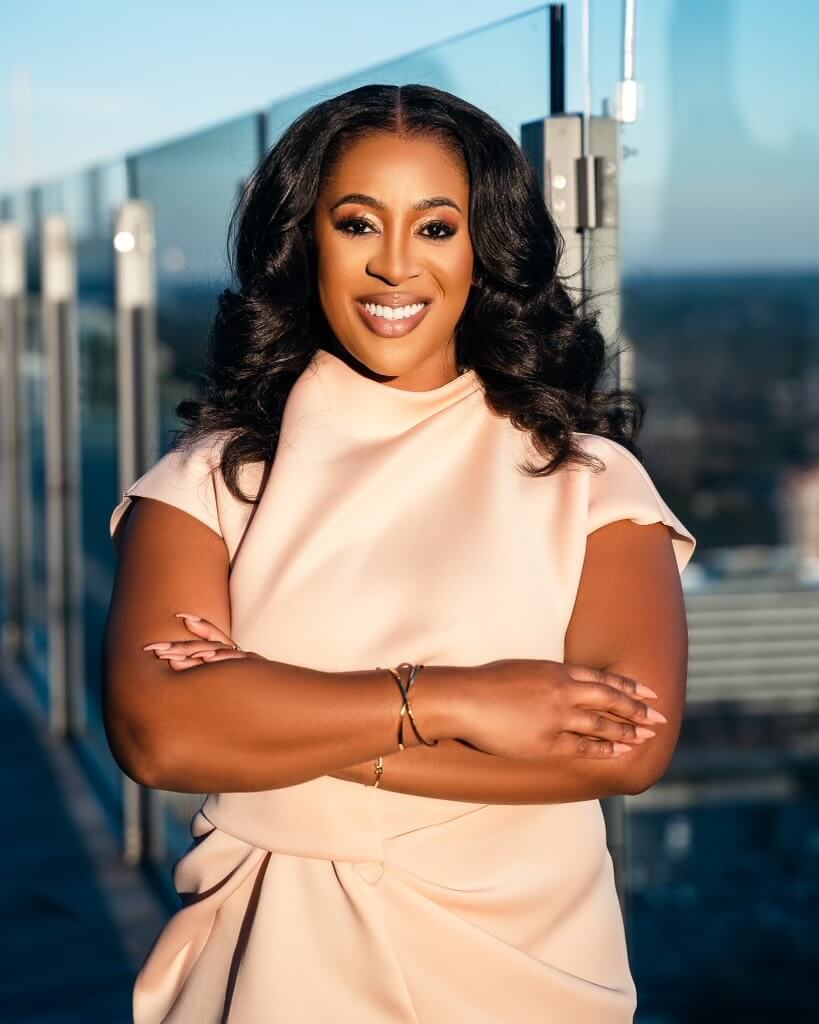As companies grow and develop, how they hire, nurture and promote talent, and create cultures of belonging become areas of greater focus. These transitional moments also create opportunities for examining Diversity, Equity, and Inclusion (DEI) practices. Over 75% of employees and job seekers rank having a diverse workforce as an important factor when considering job offers and companies, according to a 2020 Glassdoor Survey. And both employee goals and business goals can be impacted, as diverse management teams have reported 19% higher innovation revenue (BCG).
An organizational psychologist, PhD, founder and CEO of Ellavate Solutions, and professor at Georgetown University’s McDonough School of Business, Ella F. Washington is an expert in this space. She recently published “The Necessary Journey: Making Real Progress on Equity and Inclusion,” which details the DEI journeys of companies including Slack, PwC, Best Buy, Infosys, and others.
Vivaldi spoke with Washington about how business leaders can frame and take action on their goals, where companies may encounter roadblocks, and how DEI might be a form of disruption.
_____
Over the past few years, have you seen changes in company leaders’ understanding of the business case for incorporating more DEI practices?
The business case vs. the moral case is an age-old argument and many scholars and leaders feel strongly about one side or the other. I am of the camp that you need both; one without the other doesn’t work in the long term. History has shown us that without the business case, it’s hard for these efforts to be sustained, especially when there’s economic downturn or changes in leadership or, quite frankly, when everyone isn’t bought in to the moral case. The strongest companies have worked to actually make a tight connection to their business and what’s important to them, and I think that’s something that’s still missing from most organizations.
In the book you explain that companies can get stuck in approaching DEI because they’re afraid of getting diversity management wrong – when a company is in that state, what can they do to push forward?
I specifically outline three areas of focus that organizations and leaders themselves can be looking toward: purpose, pitfalls, and progress. One thing I ask organizations to do is really zone in on what their purpose is as an organization and how that connects with DEI. That often helps leaders to understand that yes, DEI is the right thing to do, not only from the humanity side, but also from the business side.
The pitfalls are really important, and the best next step is to think okay, we have these goals, we’ve figured out what our purpose is, but now we have to be honest about what’s held us back. Maybe it’s policies that are leaning toward inequities that we haven’t been honest about, maybe our leadership team hasn’t been committed throughout the organization. There can be a myriad of reasons, but holding that mirror up is critically important.
The third step is progress. What does progress look like for us? When organizations define what progress looks like, both short term and long term, set goals and define the steps to get to those goals, they are much more likely to be successful.
From the employee side, over the past couple of years people have reevaluated how work fits into the rest of our lives. They may be looking for workplaces that better reflect their values or have greater missions. How have you seen an impact caused by that reevaluation?
What I think is interesting is, the research on millennials, that came out mid-2010s, shows that millennials as a working generation were much more concerned about mission and purpose than generations before. That shift started to happen well before the pandemic. What happened during the pandemic is that people started to think about not only what they wanted out of their workplace, but what they wanted out of their lives.
I do think that people are looking at their jobs with more scrutiny, but I don’t think it’s just about what their company stands for, it’s also “how do I feel working in this company?” It goes beyond mission and purpose, it’s, “is this aligned with who I am as a person and the life that I want to live?” That’s the dynamic shift that we saw before and after the pandemic, but the trend was already in motion.
Are there one or two questions that it’s important for companies to regularly ask their employees to assess how they are feeling, with regard to where they belong in the organization?
A question that I often have my graduate students reflect on is: what does a well-lived life look like for me? When you’re 85 years old and you’re looking back over your life, what are the things that will signal that you lived a well-lived life. Oftentimes the answer to that question and the answer to “what does success mean to me?” are different. People value their family, and the impact they had on people. That’s not often the same as valuing career success, yet career success is important to many people just not as important when they think about their overall lives.
When organizations ask their employees, “what does a well-lived life look like for you,” and then follow it up with “how does the work you do every day connect with that” or “how can we better connect the work that you do every day with that definition of what a well-lived life means,” that’s how you get employees to stay for the long term.
In the book you lay out five stages of the DEI journey — how can companies who may be in earlier stages in their journeys start thinking about building structures or pipelines around DEI? Or is that something that has to come at a later stage?
A little bit of both. You can’t skip the first stage of awareness and really understand the purpose, because then you start to do things that don’t actually have an impact and are not sustainable. Once you have the foundation, it’s important to understand if you have strong direction from the top of the organization and that everyone in the organization, regardless of level, knows how they fit into the strategy. What often happens is that leadership teams get together with their chief of human resources or a DEI officer, and they make big plans with three-pronged approaches and great goals, but they don’t bring the managers along to help them understand how they fit into the larger plan. They don’t bring those grassroots parts of the organization of frontline employees, employee resource groups, and other entities along, and so there’s often a mismatch. And the reverse can also happen. A key is both top-down and bottom-up approaches; people need to really understand how they each play a role in the larger picture.

Ella F. Washington
You work with companies to do DEI audits – can you give an overview of how it works? How do you get buy-in from stakeholders that a DEI audit is an important thing to do?
Getting buy-in from stakeholders is a critical part of the success. When we think about an audit, we really think about understanding the baseline — where are we as a company, what are our current state metrics and what is our culture? Yet an audit by itself will not lead to meaningful change unless the leadership team is involved. I often pair the audit process with getting stakeholder alignment through stakeholder interviews and leadership visioning sessions. Once you have the audit, you have to know what you’re going to do with the information. Then you can say, we want to be here and our report shows we’re there, how do we close that gap? If you want to see change you have to have both metrics and stakeholder alignment to how we are going to change.
Right. A way to make things actionable and put it into practice.
Data is interesting and great and helpful, but only if you’re going to do something with it.
Many companies say they want to be “disruptors,” but maybe their hiring and promotion practices are just perpetuating a cycle of bringing in mostly white men. Is there a way to think about DEI as its own form of disruption?
Absolutely, I think you can have DEI be its own form of disruption, but you still have to have the goal in mind. Back in 2017, when P&G put out the commercial “The Talk,” which really addressed racial issues in a unique way for the first time, especially from a consumer brand company, they were disruptors because people didn’t expect P&G to be putting out a commercial like that. It’s not a commercial where there’s strong product placement throughout. They said we want to be innovative in terms of forwarding the conversation that we know a lot of our consumers are having, and so they were really specific about how they wanted to be disruptive. You can’t just have a lofty goal and not be clear on what change or impact that you’re trying to make.
Making that connection with what’s impactful from your end consumer’s perspective.
Do you want to be disruptive in terms of how your consumers see you? Do you want to be disruptive in terms of how people who want to work for your organization see you? Not that those things aren’t connected, but especially if you’re just starting off, you can’t do everything at the same time overnight. Resources, money, time are not unlimited, so you have to be pretty specific around where you’re trying to focus with this first particular initiative.
One of the questions you ask people is what a “workplace utopia” would look like. Has anything surprised you when you’ve asked that question?
What is fascinating to me about when I ask that question is that the answer is different for every single person. And I love that. To me that shows that we’re each really unique and what our utopias are look a little bit different for everyone. The beauty of that is that there isn’t just one workplace utopia that will work for everyone, of course, but the more that we understand what is ideal to each of us as individuals, the more organizations can work toward making a better place for everyone. The work of Diversity, Equity, and Inclusion is really tough work, and having that north star to work toward really helps not only to motivate me, but other people in the effort to make changes in these spaces.
_____
Dr. Ella F. Washington is an organizational psychologist, DEI expert, and Founder & CEO of Ellavate Solutions. She is a Professor of Practice at Georgetown University’s McDonough School of Business. Her book “The Necessary Journey: Making Real Progress on Equity and Inclusion” was published by Harvard Business Review Press.
